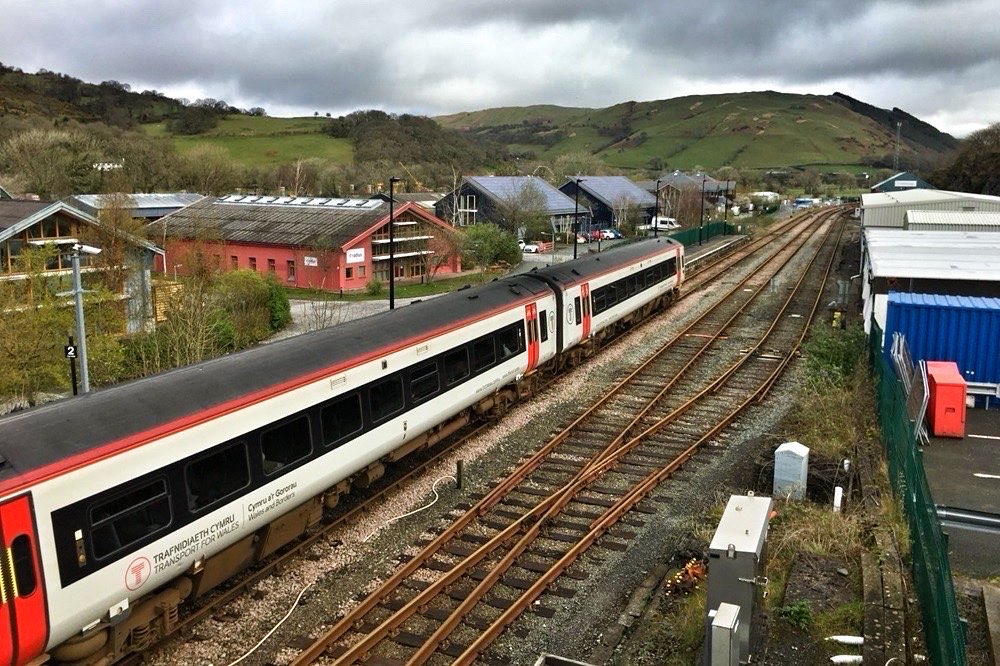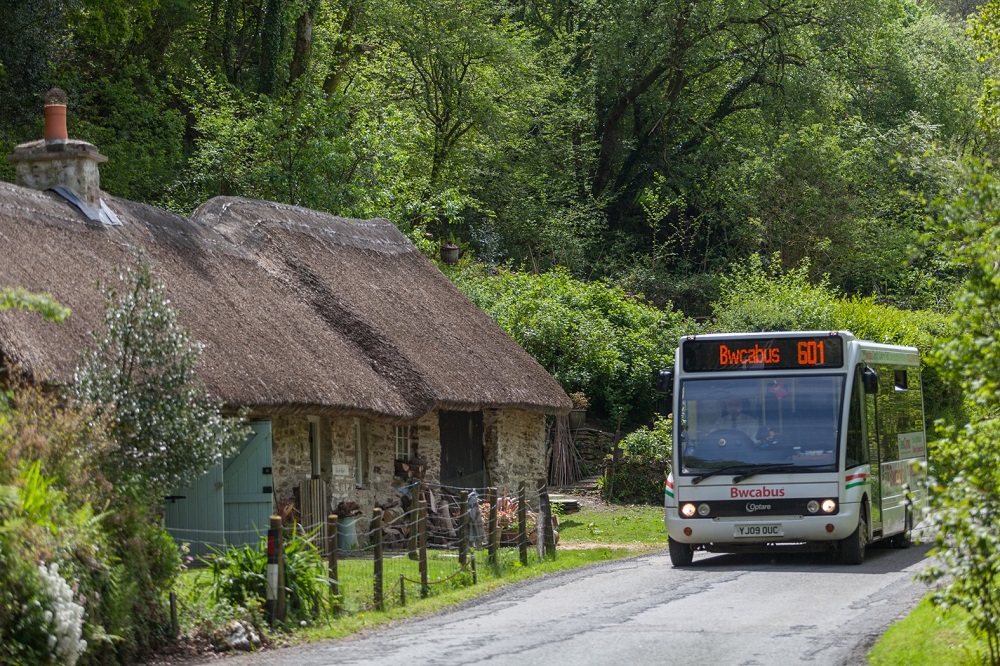Is rural Wales getting its fair share of transport investment?

Professor Stuart Cole, CBE. Emeritus Professor of Transport Economics and Policy, Prifysgol de Cymru / University of South Wales
It has been clear for over forty years that rural Wales has lost out on Welsh Government transport investment and day-to-day expenditure when compared with urban areas.
But is it as simple as the greater concentration of population where density per square kilometre varies from 545 persons in the southeast (affected by 24% of Wales’ residents living in Cardiff) to 29 persons in the Canolbarth?
Or is it that the urban oriented analysis applied to rural Wales is inappropriate and a new approach is needed?
This week Welsh Government set out its transport and economy priorities. First Minister Vaughan Gethin in the Senedd said “Transport improvements will take place across Wales for the benefit of the whole of Wales”. Meanwhile on BBC Politics Wales, economy secretary Jeremy Miles said the economy was the most fundamental issue we need to address in Wales.
These policy definitions are key to transport investment. Currently most decisions use the WelTAG / HM Treasury evaluation process which gives priority to the highest benefit cost ratio (BCR) – in the urban north coast and southeast Wales.
Value for money
It has sought since the 1960’s, one might say quite reasonably, to achieve best value for money for taxpayers.
There are some allowances to be made in the Treasury’s evaluation in that it expects a BCR of 2:1 in general; it will allow 0.5:1 for lesser populated areas.
Now that doesn’t mean reopening the Carmarthen – Aberystwyth railway line will be justified simply because the capital cost is too great. However there are many applications of funding which can be justified, but which require a different evaluation basis.
Essentially, modern day rural transport is a distribution problem – of population and travel options within a specific area, rather than referring generally to ‘rural’ areas.
There are significant spatial and social inequalities in mobility. If levelling-up was ever relevant it is in rural areas accessibility.
Spatially there are deep rural areas and even urban shadow locations (in for example the Vale of Glamorgan and the Gower) where access to buses is limited to inter urban services or services extending out of the nearby urban centre. TfW’s inter-urban TrawsCymru network provides exactly that.

But an integrated network of local feeder services or demand responsive transport (DRT) operations (e.g. Bwcabus / Fflecsi) are needed for those with no access to a car but away from the main service route.
This group may be unable to drive because of age, medical disabilities or low income and may be a small group in areas where over 90% of households have cars, but who are too dispersed for conventional bus services.
If this group is asked “would you like a car” the answer is inevitably yes. Rather we should be asking “would you like it to be easier to get to the people and places you want to visit while improving air quality, reducing accidents and making communities more pleasant places to live”.
Withdrawing a successful (in terms of popularity and satisfying travel needs) but expensive Bwcabus demand-responsive operation in southwest Wales does not seem consistent with this situation.
Revenue support
Meanwhile, most train services receive revenue support – in rural areas up to £15+ per passenger trip. However, they have a social objective to support.
It is this loss of modal choice through the decline in public transport which forces rural residents to buy cars and has created the travel mode vicious circle. Low incomes have also led to families leaving the area and moving to towns where more social and retail facilities are available.
The community spirit, and in some cases Cymraeg as the primary language, based on several generations of residency may also be lost. It may also coincide with incomers buying property from cottages to country houses at modest prices compared with the selling price of their previous home thus pushing up rural house prices. Not all have the same empathy with their area nor with Cymru Wales.

The reduction in bus and rail service routes and frequencies in rural Wales have been the result of passenger demand not returning to its pre – Covid level particularly amongst 60-and-over concessionary fares passengers (who form over 50% of passengers).
Cuts also followed financial factors either the need for more revenue support from government or to prevent losses to operators, neither of which are affordable.
If total revenue from passengers is insufficient, funding must come from elsewhere. The only major source is the public purse where the community pays part of the cost rather than the user.
There are many examples where a service is seen as a community benefit. The provision of refuse collection, education, care of the elderly and the NHS. As individuals we may rarely use these facilities, but a community philosophy enables services to be provided.
This applies to socially necessary rural public transport in several ways. Those who use buses / trains do not travel by car and so reduce congestion. If more travelled by bus the air quality impact would improve. In cities where public authorities regulate public transport fares, frequency and standards this is easier to achieve – usually through direct management or management contracts. In Estonia (comparable population 1.6m; Wales 3.1m) there is free public transport for citizens throughout the country and low cost multiride tickets for visitors.
Economic growth
The second definitive government policy element is wealth from economic growth.
Tourism is a major economic sector in Wales and particularly important in the rural context. A policy such as that in Estonia (where in 2018 I spoke in place of Mr Skates on the government funded TrawsCymru free travel during weekends) has contributed to it becoming a party-tourism ‘hot-spot’.
Whilst in Wales we may still look to tourists and residents to provide a source of revenue (if, for example, frequency and reliability are good); with the added contribution to air quality improvements and reduced traffic congestion.
Afternoon peak bus departures southwards from Aberystwyth have been cut with an impact on the towns retail economy, bus overcrowding and increased use of cars.
Over the last decades the existence of bus revenue support has prevented a ‘Beeching’ type service reduction. Politicians need to be aware of how the population is affected and not make arbitrary cuts in services just to reduce costs.
That was the principle behind the 1960’s Beeching proposal rather than any economic or social analysis.
Seeing public transport as a socially necessarily service must be the new philosophy.
Tourists in countries where multi ride tickets are available use buses / trains to a greater extent than in Wales.
The government might usefully reflect this philosophy when considering its transport priorities in rural Wales to provide ‘benefit for the whole of Wales’.
Support our Nation today
For the price of a cup of coffee a month you can help us create an independent, not-for-profit, national news service for the people of Wales, by the people of Wales.







“It has been clear for over forty years that rural Wales has lost out on Welsh Government transport investment”
“since the 1960’s”
Remind me when the Welsh Government was created?
Professor Cole has, as ever, contributed to the ongoing debate on transport in our nation. However, in July last hear he argued that the economic case for re-opening the Carmarthen to Aberystwyth railway did not add up. This may well be the case if demand is the driving factor – but in economics there is another side to the equation; supply. An efficient, reliable and fast train system will encourage passengers, evidence from all over the world supports, this – even in car mad USA train travel on the east coast route has exceeded all expectations. Why? Fast, reliable, comfortable… Read more »
Stripping out bus services, declining train service to the point where it only enables casual travel, poor maintenance of what used to be main roads, increasing hostility to car travel ….. looks like we are being conditioned into not going too far from our “Milltir Sgwar”. This will lead to further rural depopulation, concentrations around certain towns and communities. Not a pleasant prospect unless the suburban is your dream destination.
The answer is NO.
Four daily train services to be cut between Machynlleth and Pwllheli . While the Valleys havre millions spent on them.
Can some of that be put into the Cambrian and Heart of Wales Line?
Fflecsi bus covers too small and area to make it viable and has been pooly promoted.